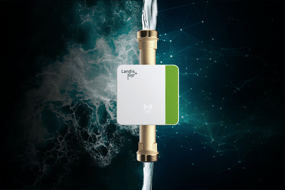 G3-PLC communication technology is known for its fast and reliable communication in a smart grid environment. By utilizing the G3-500 frequency band for smart metering communication, the easy-to-build technology provides outstanding reliability. This has been proven in several field tests with Landis+Gyr customers.
G3-PLC communication technology is known for its fast and reliable communication in a smart grid environment. By utilizing the G3-500 frequency band for smart metering communication, the easy-to-build technology provides outstanding reliability. This has been proven in several field tests with Landis+Gyr customers.
G3-PLC enables fast and cost-effective data transfer over existing power lines. The technology is highly resistant to interference and capable of adapting to changes in network conditions automatically, making it very stable and reliable. At the moment, high volumes of data are transmitted all over Europe over electricity networks using G3-PLC, and the technology plays an important role in Landis+Gyr’s communication portfolio.
In most cases today, G3-PLC technology utilizes the standardized low frequency CENELEC A band (up to 95 KHz) for data transmission. This band is dedicated to applications for monitoring or controlling the low-voltage distribution network, including the energy usage of connected equipment and premises. Over the past two years, Landis+Gyr has also utilized the so-called G3-500 band – sometimes also referred to as the FCC band – the higher G3 frequency band (150-500kHz), in several field tests with its customers in the EMEA region.
The tests indicate that the next step in PLC communication evolution is to start utilizing the G3-500 frequency band for smart metering.
Highly tolerant, reliable and fast frequency band
Landis+Gyr’s field tests with the G3-500 have shown remarkable results, as they indicate that the G3-500 boosts the communication performance even higher compared to the CENELEC A band. This is great news for utilities who wish to utilize G3-PLC technology but might be concerned about possible challenges from interference due to the future increase of devices utilizing switch power supply: there is less interference and higher attenuation in the G3-500 frequency band than in the CENELEC A band.
The advantage of the G3-500 frequency band compared to the CENELEC A band is the better data throughput which leads to extremely efficient and fast smart metering data delivery.
Better data throughput is the result of the higher number of frequency channels in G3-500, where the number of channels is doubled to 72 from 36 with the CENELEC A band. In addition, the channel group optimization in G3-500 is better: instead of groups of six channels as in the CENELEC A band, with G3-500 there are only 3 frequency channels in each frequency group. In theory, this results in an increase in data throughput, which can be more than 5 times faster. Practice confirms the theory, as similar results have been achieved in Landis+Gyr’s field tests.
A remarkable benefit of the G3-500 band is its tolerance to narrow band noise. The high tolerance in G3-500 is achieved by its bigger tone map, making it an extremely reliable band for smart metering data delivery. Additionally, the impedance of the send-out in G3-500 is higher and because of this, the range for the data delivery is longer. In practice, this means that fewer repeating devices are needed for faster and more reliable communication between the smart metering system and the meter.
Test results speak for themselves
Landis+Gyr has executed several field tests with its customers in the EMEA region utilizing the G3-500 band. One great example of the benefits of G3-500 is a field test in Sweden where a challenging area for the G3-PLC CENELEC A band was remotely switched to the G3-500. The area was dominated by long cables between transformer and cable boxes, and the network suffered from high attenuation caused by the various wires. Additionally, smart meters were placed inside the houses causing extra attenuation. When using the CENELEC A band in this area, the success rate for the smart metering data delivery was 90 – 95%. But after switching to the G3-500 band, the success rate rose to 99.9 – 100%. Other Landis+Gyr field tests have indicated similar results, as the success rate with the G3-500 in different projects has varied from 99.7 – 100%, and in some truly challenging cases the switch to G3-500 has increased the success rate even from 25 to 100%.

When diving into the numbers and technical details of the field tests, the G3-500 performance is again excellent. For example, the Round Trip Time (RTT), which affects the data throughput, has been 10 times faster compared to the CENELEC A band. Correspondingly, the IDLE time of the concentrator has increased when G3-500 is used: as one of Landis+Gyr’s field tests has shown, the time used for communication and meter reading was remarkably less than with the CENELEC A band, as the IDLE time increased from 11.8 to 70.7%. This naturally affects the speed of the meter reading but also, for example, firmware updates, which can be done faster.
Considerations with the G3-500
Switching to G3-500 is quite easy and straightforward, since with Landis+Gyr’s Gridstream AIM the frequency change can be done remotely using the Gridstream AIM system and its advanced functionalities.
As with any communication technology, there are, of course, things to be taken into account when considering the use of the G3-500 frequency band. In some countries there might be regulatory limits for using the G3-500 band.
The results with the G3-500 show that G3-PLC technology is a robust option for smart metering also in the future. When utilities make their decisions on the communication technology in their smart metering solution, they should keep in mind the TCO, roll out strategy and future development path. At Landis+Gyr we are happy to help utilities with this decision, whether it’s G3-PLC, NB-IoT or RF Mesh.





